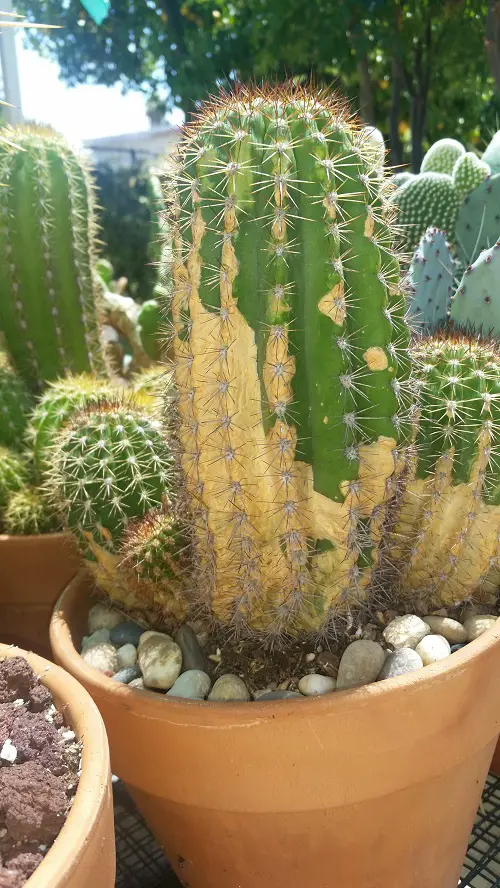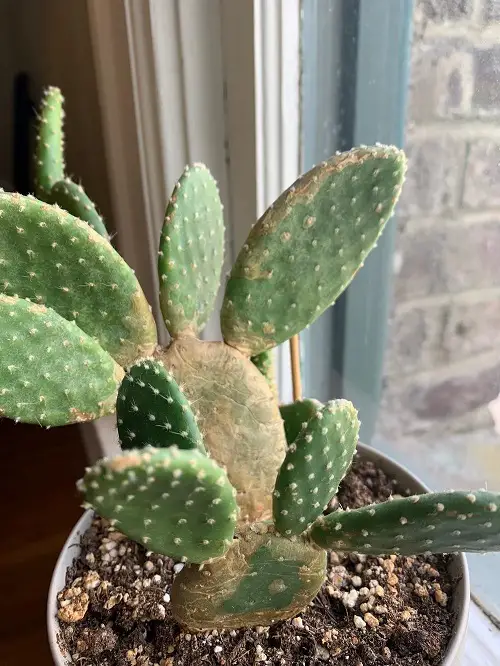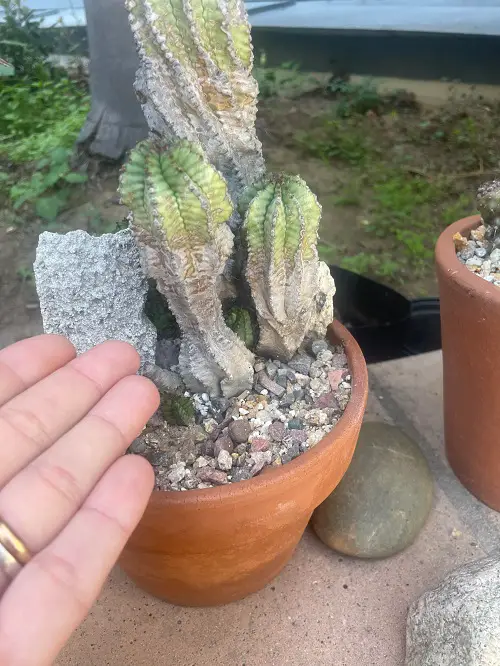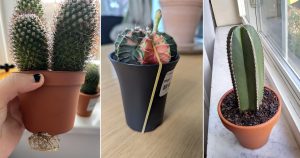What is Cactus Corking? Is corking a bad sign? Will my cactus look weird forever? Scroll down for all your answers!
So your cactus is losing color, morphing from a gloriously succulent green to a sickly brown or yellow, and growing wrinkly scales and scabs–not the tough, vital young desert dweller you brought home! Hit pause on that panic button and take a chill pill–your cactus ain’t croaking; it’s simply corking!
What is Cactus Corking?
When your cactus corks, its stem will get thicker, harder, and lose color. A bark-like yellowy scab may start at the bottom of your succulent and make its way up to various parts of the plant, resembling a “cork.”
Now, if your cactus shows just these signs and nothing else that indicates rot, you can relax. It could be aging or responding to environmental stress in some cases, but in all likelihood, your cactus is simply getting ready for new growth and preparing to support its own weight without toppling over.
Why Do Cacti Cork?
Just like we get wrinkles as we age, cacti develop a tough, corky layer on their stems as they age. This is how they protect themselves from tough conditions like drought or extreme heat. Some varieties, like monstrose cactus and even succulents like euphorbia, are more prone to corking than others, which can also be influenced by their genes.
This corky tissue reduces water loss and is mostly a sign of your cactus adapting to its growth needs. Seasonal changes, extreme weather fluctuations, and even injuries can lead to corking as a means of self-preservation.
Spotting Cactus Corking
Just look for areas on the cactus stem that seem thicker, harder, and paler than the rest. They might even look scaly and yellowy brown, and sometimes, the cactus loses its spines. Corking can also distort your succulent’s shape and texture, but the process is usually bottom-up and quite uniform.
But how do you know it isn’t rotting? Typically, when cacti decay, they do turn brown, but the rotten areas turn soft and mushy, unlike in corking. In disease or rot, the affected areas are often slimy and smelly and can spread arbitrarily, affecting other random parts of the plant in no order, or even nearby plants!
How to Stop Cactus Corking?
Dealing with this situation is like caring for a baby—usually, corking is just a natural immunity-building phenomenon and doesn’t need much attention. However, if its coarse and dehydrated appearance bothers you and spoils the aesthetics of your space, a gentle prune may give your cactus a facelift.
Use sterilized, sharp shears, and be selective in the areas you trim or scrape off. Be careful not to hurt the cactus’ healthy tissue, and allow it to heal completely. Use soft ties for support and water sparingly, just offering a drink when thirsty.
Supplement these steps by providing your plant with a stable environment with ample sunlight, zero stress, and well-draining soil! And constantly monitor its progress and give it all the moral support it needs for recovery. With love and care, your cactus will bounce right back to health, ready to take its place in the grand family portrait once again!









